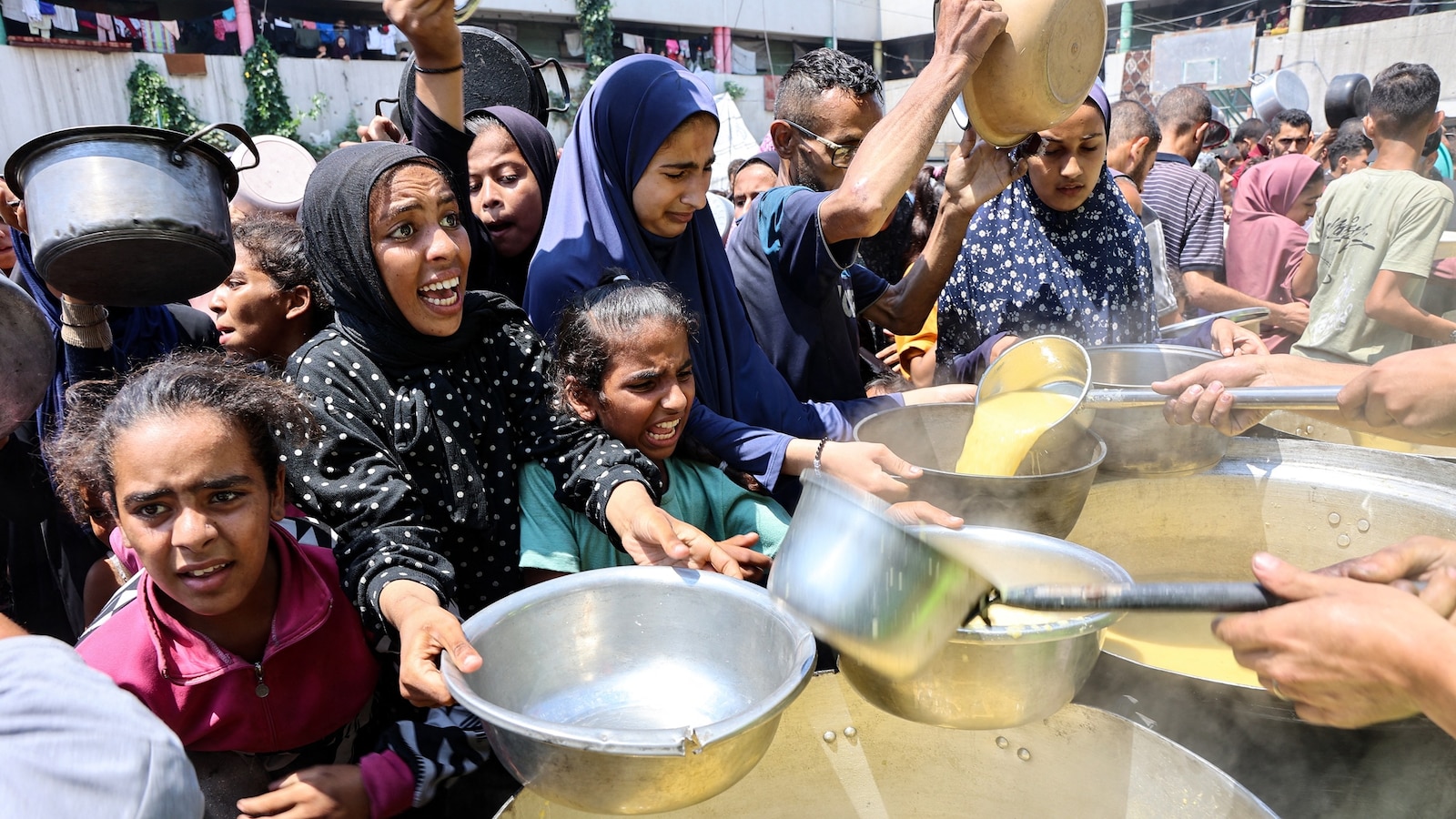A famine hasn’t been declared in Gaza, but that may not matter, experts say
For months, humanitarian aid organizations and international bodies have warned that Gaza is facing “critical” levels of hunger and that famine is “imminent” in parts of the Gaza Strip.
An increasing number of deaths due to malnutrition have also been reported and gut-wrenching images have emerged of suffering children and long food lines. According to the Hamas-run Gaza Ministry of Health, 14 people have died of hunger over a 24-hour period as of Monday, bringing the total number of deaths from that cause to 147 since Oct. 7, 2023. Of the total deaths due to hunger, at least 88 have been children, according to the Health Ministry.
Additionally, a recent international report found the “worst-case scenario of famine” is unfolding in Gaza.
However, there has been no official determination or declaration of famine, which has led to political sparring about whether one exists
Humanitarian workers and food security experts told ABC News that an official declaration may not matter. There are no legal obligations from countries or international organizations when a famine is determined, and it is merely a sign that the food insecurity in an area is the worst it can be.
Additionally, they added that a famine determination is very hard to make because it is heavily data-driven.
“It’s a very high bar and the nature of the process is that if the data aren’t there, you say it’s not a famine,” Alex de Waal, executive director of the World Peace Foundation at Tufts University, told ABC News. “It has no legal force. The word ‘famine’ has no meaning in law.”
The experts also said a famine determination may not matter because the time to intervene is now. Assessing famine often comes after many lives are lost and people are currently starving, they said.
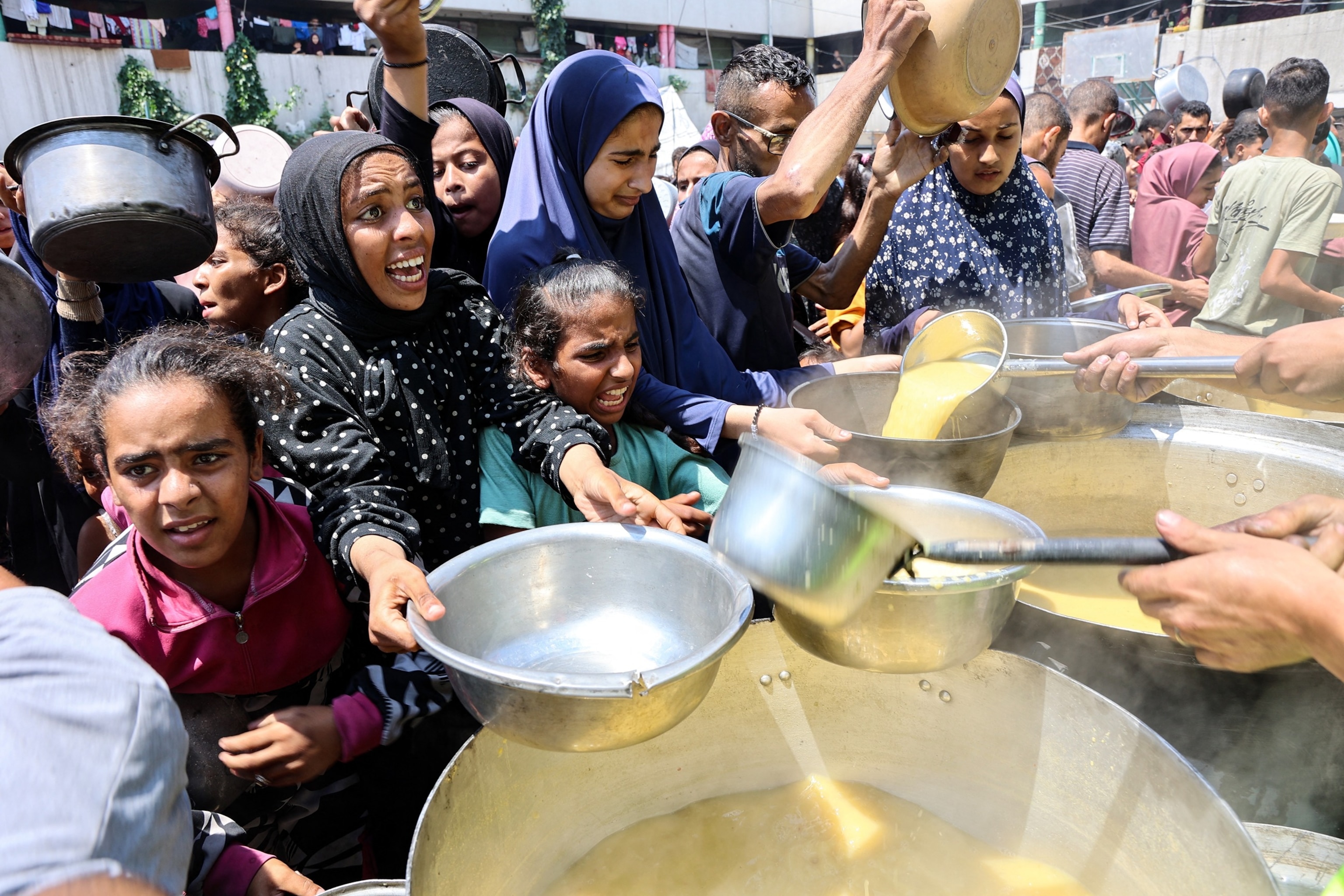
Displaced Palestinians receive lentil soup at a food distribution point in Gaza City in the northern Gaza Strip, July 25, 2025.
Omar Al-qattaa/AFP via Getty Images
Scott Paul, the director of peace and security at NGO Oxfam America, told ABC News that much more food needs to enter Gaza than is currently being let in because of severe restrictions put in place by Israel, but water and sanitation interventions as well as nutritional supplementation are also important.
“If people are drinking unsafe water or living in unsanitary conditions, that’s what creates breeding grounds for diseases, and those are the primary killers in a famine situation,” he said.
During the 2012 famine in Somalia, about 250,000 people died. Of those deaths, approximately half occurred before a famine was declared, Paul said.
“So, the importance of taking action before famine is declared can’t be overstated,” Paul said.
What is the criteria for how a famine is determined?
The first step in a famine declaration is a determination from the Integrated Food Security Phase Classification (IPC), which is a scale used for food security measurement and decision-making.
It was developed in 2004, originally for use in Somalia, led by the World Food Programme and the United Nations’ Food and Agriculture Organization.
The IPC is a collaboration of 21 organizations and intergovernmental institutions including CARE International, the Oxford Committee for Famine Relief (Oxfam), the United Nations Children’s Fund (UNICEF) and the World Health Organization (WHO).
“Once the U.N. and also the U.S. adopted this definition, it became the dominant metric,” de Waal said.
The IPC has five phases of acute food insecurity ranging from minimal/none (Phase 1) to catastrophe/famine (Phase 5).
Phase categorizations occur at the household level, meaning that Phase 5 would refer to a household that is experiencing an extreme lack of food and that has exhausted all available options, Emily Byers, managing director of global development policy and advocacy at NGO Save the Children, told ABC News.
The whole territory of Gaza is currently in Phase 4, which is characterized as an emergency, with half a million people expected to be in Phase 5, or catastrophe, by September 2025.
On Tuesday, the IPC issued an alert warning that the “worst-case scenario of famine is currently playing out in the Gaza Strip.”
The alert stated, “Unhindered, safe, stable and sustained humanitarian access must be guaranteed across the entire Gaza Strip and through all entry points — land, sea and air — to enable the delivery of lifesaving, multi-sectoral assistance and services at scale, and data collection on human welfare across the Gaza Strip.”
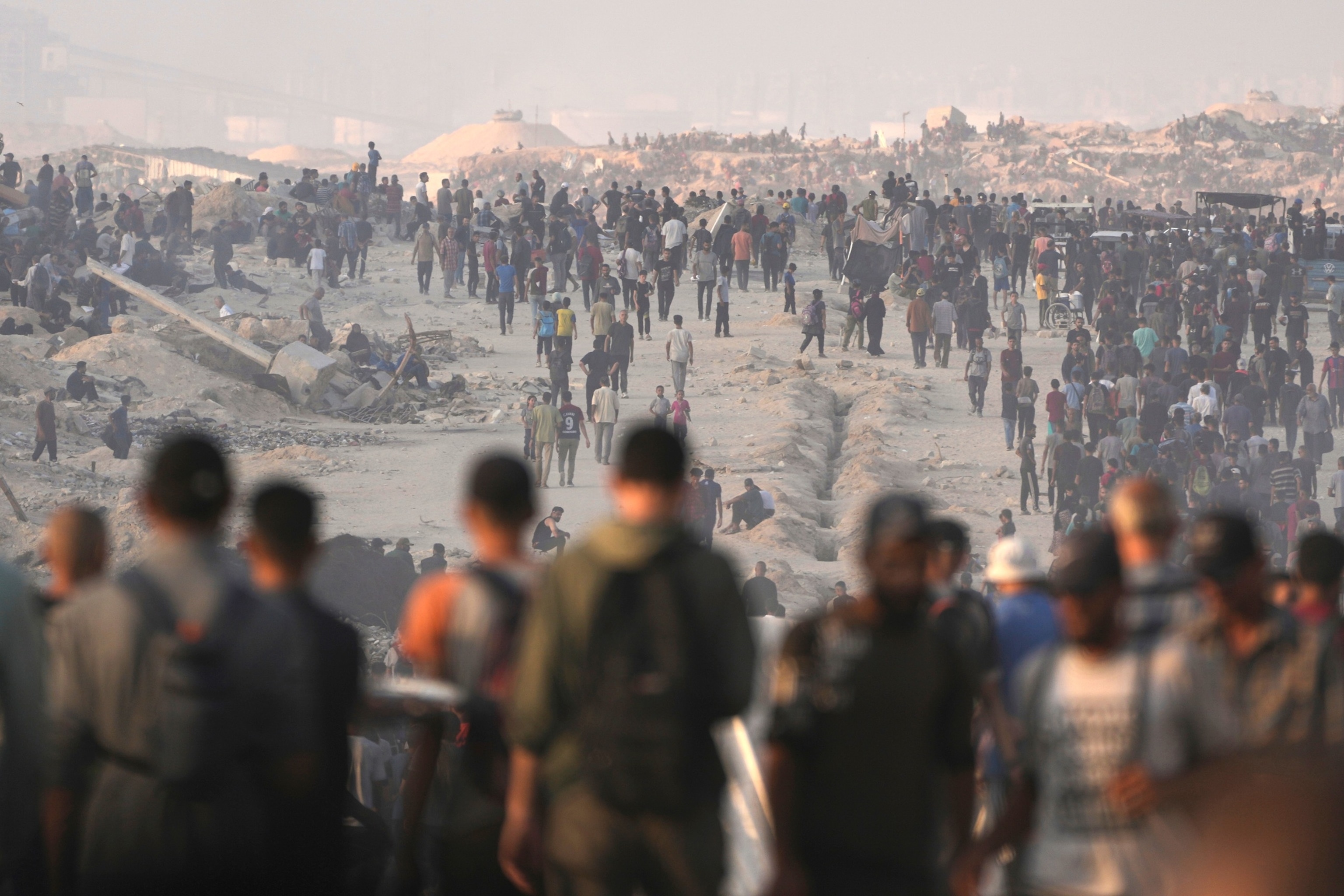
Palestinians wait for food aid trucks to enter from northern Gaza, in Gaza City, July 25, 2025.
Abdel Kareem Hana/AP
To determine if a famine is happening, according to IPC, three thresholds have to be met: 20% of households must be facing an extreme food shortage, 30% of children must be acutely malnourished and either two adults or four children must be dying every day per 10,000 people.
Even when the IPC determines an area has met all three criteria, the IPC’s independent famine review committee — consisting of experts in food security, livelihoods, nutrition and health — must agree.
Once the committee determines there is a famine, a declaration will typically made by the United Nations or the host government. The IPC can determine, but only an authoritative body can declare.
“A famine declaration is different,” Byers said. “That needs to be done usually by the government of the country where the area of famine is, or it can be an international body as well. So once the IPC is like, ‘We think famine is present in this place,’ it’s not officially a declaration until there’s another step.”
The IPC said in Tuesday’s report that its alert “does not constitute a famine classification” but that given the most recent data, a new analysis will be conducted imminently.
For a famine declaration to be made, there must first be a determination from the Integrated Food Security Phase Classification (IPC) partnership, whose members include the World Health Organization.
The difficulty in declaring a famine in wartime
It can be very difficult to accurately access information to determine whether a famine is occurring during times of war, because of disruption to the population, like in Gaza.
Paul told ABC News that Oxfam colleagues in Gaza, as well as other aid workers who would be collecting data, are working under strenuous circumstances.
“Our colleagues in Gaza right now, they are trying to work under bombardment with no guarantee of safety,” he said. “They are often going out on their own risk because the deconfliction and notification mechanisms that ought to guarantee their protection aren’t functioning properly.”
De Waal said in a peaceful location, it is easier to survey whether 30% of children are malnourished, which is one of the metrics for determining a famine. In a combat zone, it is much harder to get the information and interpret it.
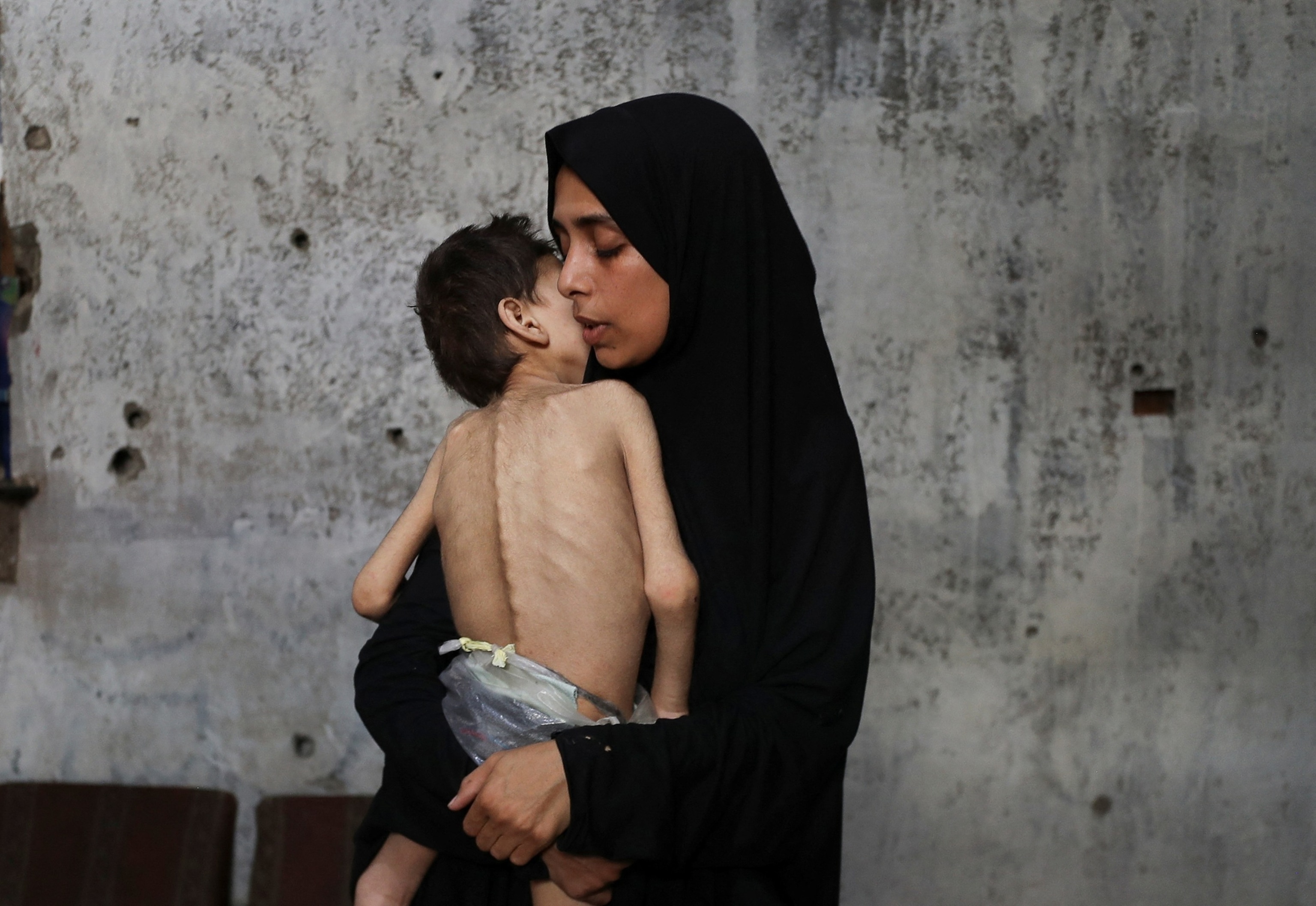
Displaced Palestinian mother Samah Matar holds her malnourished son Youssef, who suffers from cerebral palsy, at a school where they shelter amid a hunger crisis, in Gaza City, July 24, 2025.
Mahmoud Issa/Reuters
“If the population is disrupted, and you don’t know what’s the baseline, you don’t who you’re capturing, who you’re not capturing. It becomes harder, and it’s a huge problem for Gaza,” he said.
Paul added that Oxfam colleagues are also experiencing the same problems facing the civilian population — a shortage of food or expensive food where it is available.
“And so, this is extraordinarily difficult to try to pull together a comprehensive, data-driven picture of anything,” he said. “it is an extraordinarily difficult challenge to get the data that you’d need to have a famine declaration with confidence.
Paul added that there is a high bar for declaring famine.
Humanitarian organizations and committees need a reasonably high level of confidence that famine is taking place before making a determination, he said.
“[If] we don’t have the concrete numbers to back it up, we won’t use [the term],” Paul said.
De Waal added it is also possible to have a famine without an overall shortage of food, which make a declaration complicated.
“In any famine, it is actually the poorest who are the ones who starve,” de Waal said. “My former professor at Oxford who wrote a famous book called ‘Poverty in Finance,’ said, ‘Starvation is the characteristic of some people not having enough food to eat. It’s not the characteristic of there not being enough’ and you describe famine as the failure of entitlement to food, not the failure of availability of food.”
Response to the hunger crisis in Gaza
Aid groups continue to warn that the level of humanitarian aid currently being allowed into Gaza needs to be scaled up to meet the dire needs of civilians.
“We’re nowhere near where we need to be. These negotiations for a handful of trucks here or a couple of hours of a crossing there — this is negotiating at the margins for people’s lives,” Paul said.
“A lot of people assume that when you’re facing a famine, that what you need to do is flood the zone with food — that’s part of the solution,” Paul continued. “But there is a point of no return in extreme food emergencies, where for many people who are experiencing severe acute malnutrition, and particularly children who are experiencing acute malnutrition, food can actually be dangerous if you eat calories in a certain form and you’re malnourished.”
DeWaal concurred, saying it’s not enough to increase the amount of food, it’s about getting the right food and the right specialized food to the people who need it.
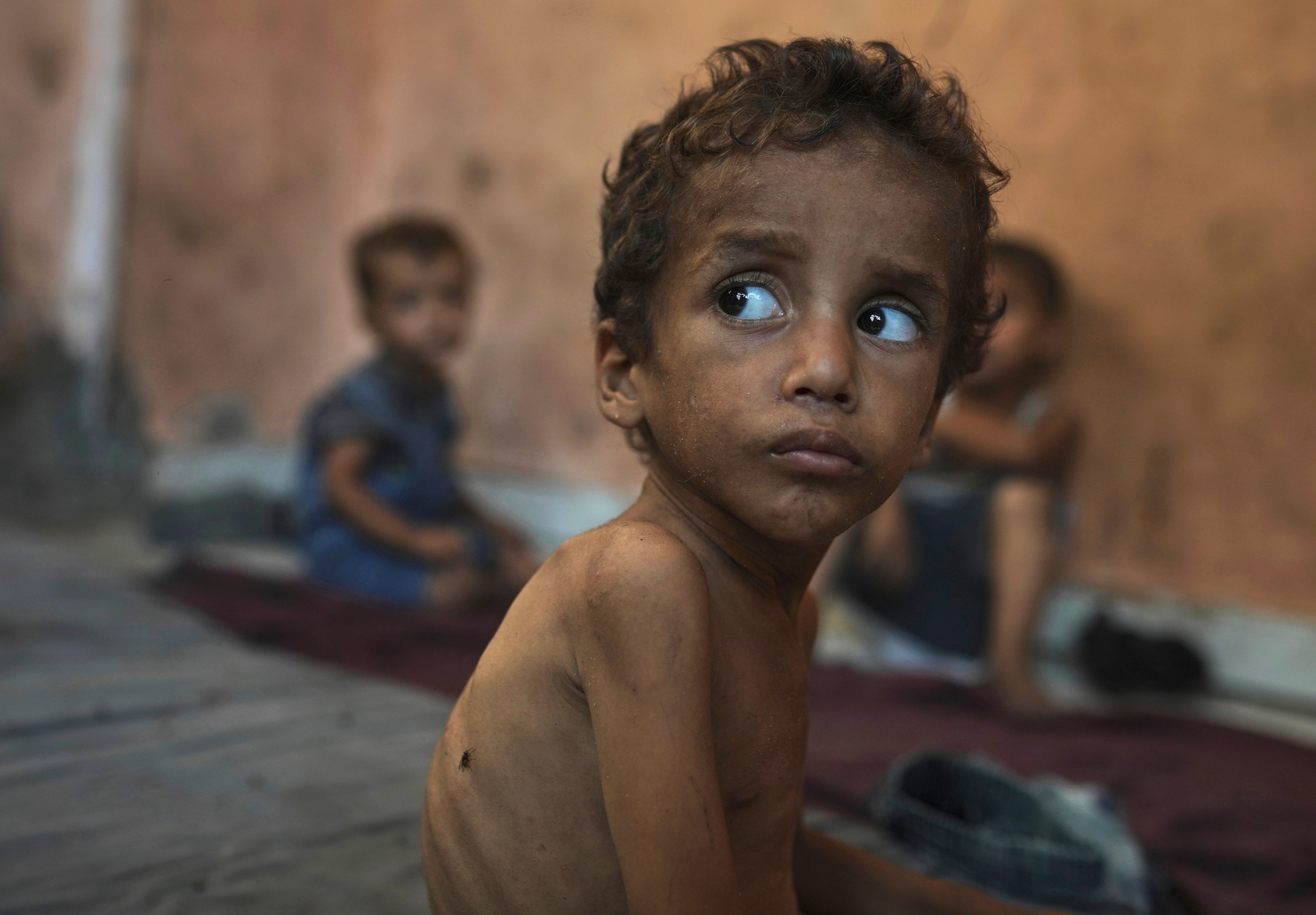
Yazan Abu Ful, a 2-year-old malnourished child, sits at his family home in the Shati refugee camp in Gaza City, July 23, 2025.
Jehad Alshrafi/AP
Byers said it is much harder to reverse the course of the hunger once a famine determination or declaration is made in any area, and that the phases before IPC’s Phase 5 should serve as early warnings.
“Once you get to that determination, there is already so much damage done that it just becomes so much harder and such a deeper, deeper problem to deal with and come back from, she said. “And so, acting early is just incredibly important … We don’t want to wait [until] kids are actively dying to really go in there with full-strength.”
Specifically in Gaza, there are humanitarian organizations around the world ready to fund “the kind of response that would save lives,” Paul said.

